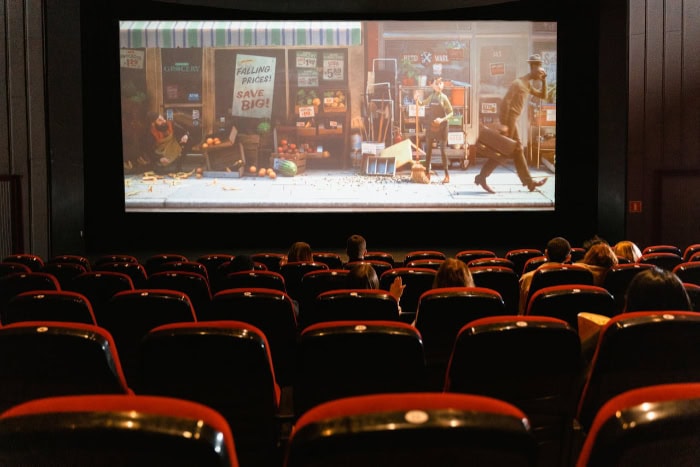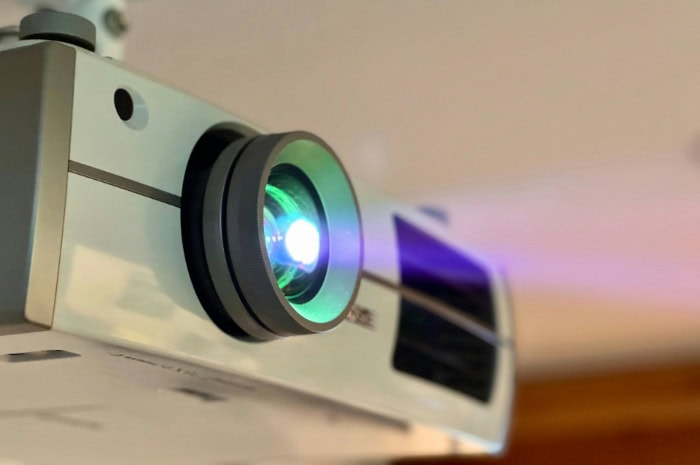What Is Dolby Atmos? Experience Sound Like Never Before

Imagine being able to hear the rainfall pattering above you, a helicopter soaring overhead, or whispers traveling seamlessly around you—this is the magic that Dolby Atmos brings to audio. By breaking free from the limitations of traditional surround sound, Dolby Atmos creates a fully immersive, three-dimensional soundscape where every detail comes to life.
It's more than just sound; it’s an experience designed to pull you deeper into your favorite movies, music, and games. With applications ranging from the massive sound systems in cinemas to compact home setups and even headphones, Dolby Atmos is redefining how we connect with sound.
Understanding Dolby Atmos
Dolby Atmos is an object-based audio technology that treats individual sounds as independent entities, called “sound objects.” This is a departure from conventional surround sound formats like 5.1 or 7.1, which rely on assigning sounds to fixed audio channels or speakers.
For example, in a traditional 5.1 system, sounds are directed to specific speakers positioned around the listener. While effective in creating a surround effect, this approach limits how sound can be placed and moved within the environment.
Dolby Atmos, in contrast, removes these restrictions by allowing sound designers to assign precise locations to each sound object within a three-dimensional space. These sounds are no longer tied to particular speakers; instead, they can move seamlessly through the room, whether it's a bird chirping above, a car speeding past, or rain subtly falling all around.
This approach not only enhances the realism of the audio experience but also creates the sensation of being right in the middle of the action, fully enveloped by sound.
Core Features
One of the defining features of Dolby Atmos is its use of sound objects rather than fixed channels. Each sound object can have its own position and behavior, giving creators unparalleled flexibility in crafting immersive soundscapes.
Traditional formats, while effective for their time, are limited by their reliance on predetermined speaker outputs. In a Dolby Atmos setup, however, the system uses metadata to interpret where each sound should originate and how it should move throughout the space.
This allows for a more nuanced and dynamic listening experience.
Another key innovation is the inclusion of height channels. Traditional systems typically focus on horizontal sound placement, positioning audio around the listener at ear level.
Dolby Atmos goes a step further by introducing vertical sound elements, enabling sounds to emanate from above. This addition drastically enhances the sense of depth and realism in the audio experience.
The height channels allow for effects like helicopters flying overhead or thunder rumbling in the sky, which simply weren’t possible with older formats. By combining horizontal and vertical elements, Dolby Atmos creates an immersive 360-degree sound field that feels natural and lifelike.
How Dolby Atmos Works

Dolby Atmos transforms audio into a dynamic and immersive experience by using innovative technology to position sound in a three-dimensional space. The system doesn’t just aim to produce sound from all directions—it ensures that every sound feels precisely placed, creating a sense of realistic depth and movement.
The Role of Sound Objects
At the core of Dolby Atmos is its ability to treat sounds as individual objects. Unlike conventional audio formats that rely on assigning audio to fixed channels, Dolby Atmos enables each sound to act independently within a 3D environment.
These sound objects could represent anything—a buzzing insect, the crackle of fire, or the roar of an airplane—and they are free to move in any direction, including above the listener.
By using sound objects, Dolby Atmos allows creators to precisely position sounds in relation to the audience, resulting in a more lifelike auditory experience. For instance, in a movie scene, you aren’t just hearing a car drive past; you’re experiencing it as if it’s actually moving from one side of the room to the other.
This creates a natural and immersive effect that mirrors how sound exists in the real world.
Speaker Setup and Metadata
The magic of Dolby Atmos isn’t just in how sounds are created but also in how they are delivered. To achieve precise sound placement, Dolby Atmos relies on metadata, which acts as a set of instructions for audio playback.
This metadata tells the playback system exactly where each sound object should be positioned and how it should move in real-time based on the environment and speaker configuration.
A crucial component of this setup is the inclusion of overhead and height speakers. While traditional surround sound systems focus on placing speakers around the listener at ear level, Dolby Atmos setups incorporate speakers that can project sound from above.
These additional channels allow for vertical sound placement, which is essential for creating the 3D sound experience. Sounds such as rain falling from the sky or a helicopter flying overhead are brought to life through this added dimension, making the listener feel fully immersed in the scene.
The system is also highly flexible, capable of adapting to varying speaker arrangements. Whether it’s a large theater with dozens of carefully placed speakers or a home setup with a more modest system, Dolby Atmos uses metadata to optimize sound delivery for the specific environment.
This ensures that the immersive effect is preserved across different scales and configurations.
Adaptability Across Devices
One of the standout strengths of Dolby Atmos is its ability to scale across a wide range of devices. While it’s impressive in cinema setups with massive speaker arrays, it doesn’t rely solely on expansive systems.
For home users, Dolby Atmos can work with soundbars, specialized AV receivers, and compact speaker systems, bringing the multidimensional audio experience into living rooms without requiring an overwhelming setup.
Even without dedicated height speakers, some systems use upward-firing drivers to simulate overhead sound, making it more accessible for everyday users.
Dolby Atmos also extends its versatility to personal devices, such as headphones and smartphones. Through advanced virtualized processing, headphones can create the illusion of 3D sound placement, allowing users to enjoy a similar immersive experience regardless of location.
This adaptability makes Dolby Atmos ideal for not only premium home theaters but also gaming, music, and mobile entertainment, enabling listeners to feel surrounded by sound no matter where they are.
Applications of Dolby Atmos

Dolby Atmos has seamlessly integrated itself into various industries, elevating the way we interact with sound in movies, music, gaming, and home entertainment. Its ability to create a lifelike three-dimensional audio experience enhances how we enjoy content, making it more engaging and immersive than ever before.
Whether it’s the deep rumble of an explosion in a blockbuster film, the crystalline notes of a live concert, or the precise directional sound in a video game, Dolby Atmos adapts to amplify the emotional connection between the audience and the content they consume.
Cinemas and Theaters
Cinemas were among the first to adopt Dolby Atmos, and for good reason—it transforms the theater experience into something extraordinary. Traditional surround sound systems, while effective, often left certain sounds feeling flat or confined to a specific direction.
Dolby Atmos, however, takes every element of a movie’s sound design to new heights by enveloping the audience in a 360-degree soundscape. With speakers placed not only around but also above the audience, it creates the sensation that you’re part of the story unfolding on the screen.
Imagine sitting in a theater and hearing the roar of a jet streaking from behind you to directly overhead or feeling the rain truly falling all around as characters embrace in a storm. These effects are made possible by Atmos’ ability to position sound dynamically and realistically.
Cinematic moments feel richer, deeper, and more immersive, allowing viewers to become fully absorbed in the movie. Directors and sound designers leverage this technology to craft emotional and atmospheric experiences that enhance storytelling, and Dolby Atmos continues to be a defining feature in modern theaters worldwide.
Home Entertainment
Dolby Atmos has also become a prominent feature in home entertainment, bringing cinema-like sound into living rooms everywhere. Many home theater systems now support Atmos technology, allowing users to recreate that same sense of immersion in their own spaces.
From multi-speaker setups with overhead channels to compact soundbars with upward-firing drivers, the technology accommodates a range of configurations, making it accessible to different budgets and room sizes.
Streaming platforms such as Netflix, Disney+, and Amazon Prime Video have embraced Dolby Atmos as part of their offerings for select titles. Watching a show or movie at home now feels more engaging, with dialogue, effects, and background noises delivered with breathtaking clarity and spatial accuracy.
Whether it’s the subtle rustle of leaves or the thunderous impact of an action sequence, Atmos adds depth and dimension to everything you hear, elevating the viewing experience.
For those without extensive speaker setups, Dolby Atmos-enabled soundbars and even Atmos-compatible televisions create stunning results. These devices may use advanced processing to simulate height channels, ensuring that users can still enjoy the immersive experience without multiple speakers or complex installations.
Music and Gaming
Dolby Atmos is reshaping how we listen to music, offering new levels of artistry and detail. Unlike traditional stereo recordings, which limit sound to a horizontal plane, Atmos enables artists to position instruments, vocals, and effects within a full 3D space.
This spatial audio approach makes music feel more intimate and expansive, enhancing the listener’s connection to the soundscape.
For example, in an Atmos-mixed track, a vocal might float above the listener while instruments surround them from different angles, mirroring how sound feels in a live performance. Streaming services such as Apple Music and Tidal now offer Dolby Atmos tracks, giving listeners access to these immersive experiences from their favorite artists.
Whether using a Dolby Atmos sound system or headphones with Atmos capabilities, users can hear music with a level of precision and richness that wasn’t possible before.
In gaming, Dolby Atmos creates a competitive edge and enhances realism by delivering directional sound cues. With Atmos-enabled games, players can pinpoint the exact location of footsteps, explosions, or environmental noises within the virtual world.
This level of precision not only adds to the immersive quality of games but also improves gameplay by enabling players to react more effectively to their surroundings. Whether exploring an open-world RPG or competing in fast-paced multiplayer action, Atmos helps games come alive in ways that amplify tension, excitement, and storytelling.
Dolby Atmos has cemented its place in entertainment, bringing unprecedented depth to movies, music, and gaming. Its ability to adapt to different environments and devices has allowed more people than ever to experience it, making it a driving force in audio innovation.
Benefits of Dolby Atmos

Dolby Atmos has redefined how we experience audio by delivering sound with stunning precision and depth. Its innovative approach allows for an unparalleled level of immersion, versatility, and clarity that elevates everything from blockbuster films to music and gaming.
Immersive Sound Experience
The hallmark of Dolby Atmos is its ability to create an immersive sound environment that feels vivid and lifelike. Unlike traditional audio formats that rely on fixed channels, Atmos allows sounds to move freely within a three-dimensional space, replicating how we naturally hear in the real world.
This precision creates a sense of realism that places listeners in the heart of the action, whether it’s hearing raindrops falling above or a car speeding past with pinpoint accuracy.
This multidimensional sound placement transforms passive listening into an active, almost tactile experience. In movies, it makes every explosion, whisper, and musical score feel more alive.
In gaming, it enhances spatial awareness, making it easier to pinpoint directional cues like footsteps or approaching vehicles. Even in music, the effect is mesmerizing, with the sensation of instruments and vocals surrounding the listener in rich, atmospheric layers.
The ability of Dolby Atmos to heighten realism ensures that entertainment becomes more than just something we hear—it becomes something we feel.
Versatility Across Platforms
One of the standout advantages of Dolby Atmos is its adaptability to a wide range of devices and setups. While it delivers stunning results on high-end systems equipped with multiple speakers and overhead channels, the technology is just as impactful in more compact or portable formats.
This flexibility makes it accessible for a variety of audiences, regardless of their budget or available space.
For home theaters, Dolby Atmos can be configured with ceiling-mounted or upward-firing speakers that reproduce the height element of sound, creating a cinematic experience in the comfort of your living room.
Soundbars with Atmos compatibility offer a more streamlined but equally impressive alternative for those seeking immersive audio without complex installations.
What makes Dolby Atmos even more versatile is its compatibility with mobile devices, laptops, and headphones. Through advanced virtualization, Atmos can simulate multidimensional sound even with stereo speakers or traditional headphones.
Streaming services such as Netflix, Disney+, and music platforms like Apple Music ensure that audiences can enjoy the benefits of Atmos no matter where they’re listening or watching. This wide compatibility ensures that the technology fits into modern lifestyles without requiring specialized setups for every situation.
Improved Clarity and Depth
Dolby Atmos enhances not only sound placement but also the overall quality of what you hear. One of its most practical advantages is the clarity it brings to dialogue.
In many traditional formats, loud background effects or overlapping audio elements can sometimes make conversations difficult to understand. With Dolby Atmos, sounds are spatially separated, allowing dialogue to remain distinct without sacrificing the richness of the surrounding environment.
It also brings out subtle details that might be missed in other formats. Atmospheric background sounds like the rustle of leaves or the distant hum of conversation are rendered with a clarity that adds depth and texture to every scene or track.
In music, this means hearing hidden nuances in a performance, such as the faint echo of a vocal or the delicate resonance of a string.
The precision of Dolby Atmos doesn’t just make sound clearer; it also ensures that the dynamics—how soft or loud something is—feel more natural. Explosions have more impact without being overwhelming, gentle whispers are crisp without being lost, and transitions between quiet and loud moments feel smoother.
With Dolby Atmos, everything you hear is richer, fuller, and more detailed, creating a truly captivating experience that enhances all forms of entertainment.
Challenges and Practical Considerations

While Dolby Atmos has redefined the standards for immersive audio, there are practical challenges that may impact its accessibility and ease of adoption. From cost-related barriers to technical requirements, these considerations highlight both the potential hurdles and the alternatives available for enjoying Atmos’ benefits.
Cost and Accessibility
One of the most significant challenges with Dolby Atmos lies in the expense associated with setting up a full-fledged Atmos system. For a complete experience, traditional speaker setups require multiple components, including ceiling-mounted or upward-firing speakers, an Atmos-compatible AV receiver, and other high-quality audio gear.
Creating this kind of comprehensive system can quickly become a costly investment, especially for those seeking the best performance in larger spaces.
However, for users who wish to experience Dolby Atmos without spending excessively, there are more affordable alternatives. Soundbars with Atmos support have become a popular option, offering a simplified way to achieve dimensional sound without requiring multiple speakers or complicated installations.
Many of these soundbars use sophisticated audio processing and upward-firing drivers to simulate the height channels that are essential to the immersive effect.
Additionally, virtualized Dolby Atmos on headphones provides another accessible way to enjoy 3D sound, catering to listeners who prefer a personal audio experience at a significantly lower cost.
Even with these alternatives, affordability remains a key consideration, particularly for individuals living in smaller spaces or those with limited budgets. While the market continues to expand with new devices at varying price points, users must weigh their options carefully to determine the best approach for their needs.
Content Availability
Content availability is another factor that can affect the practical use of Dolby Atmos. Although more streaming platforms, gaming titles, and music services are adopting Atmos technology, the range of content available in this format is still not as extensive as traditional surround sound.
For users investing in Atmos-capable hardware, the lack of content compatibility may be a source of frustration.
Streaming services like Netflix, Disney+, and Amazon Prime Video are leading the charge by offering movies and shows with Dolby Atmos audio tracks. However, not all titles are Atmos-enabled, and availability can vary by region or platform.
This means that users may not always have a consistent library of Atmos-compatible content, potentially underutilizing their equipment. Similarly, while music mixed in Dolby Atmos is growing in popularity, it remains a relatively new offering on platforms like Apple Music and Tidal, leaving some genres or catalogs unavailable in this format.
Gaming is one area where Atmos adoption is steadily increasing, but, as with streaming, not every game is designed to include Atmos soundscapes. For users purchasing Atmos-capable devices primarily for specific types of entertainment, this variability in content can feel limiting.
Technical Requirements
For Dolby Atmos to function at its best, certain technical requirements must be met, which can present challenges for users with older or incompatible equipment. To achieve the optimal experience with a home theater system, an Atmos-enabled AV receiver is essential, along with speakers capable of replicating both horizontal and vertical sound.
Ceiling or upward-firing speakers, in particular, are crucial for the height channels that create the signature three-dimensional effect. Without them, users may miss out on critical elements of the experience.
Compatibility issues can also arise when attempting to integrate Atmos with existing systems. Older AV receivers or speakers that were not designed with Atmos in mind may not support its features, requiring users to upgrade their setup entirely.
Additionally, some complications can occur when attempting to stream Atmos-compatible content; users need to ensure their devices and streaming platforms are fully Atmos-enabled, as some may only offer stereo or basic surround sound as a fallback.
For those using virtualized Atmos on headphones or compact systems, results may vary based on the specific device’s capabilities. While this technology does a remarkable job of replicating 3D sound, it may lack the full impact and depth of a dedicated speaker setup.
Despite these technical requirements, Dolby Atmos remains a highly adaptable technology, and new devices are frequently introduced to make it more accessible.
Conclusion
Dolby Atmos has set a new standard for how sound is experienced, bringing unparalleled immersion, depth, and realism to entertainment. Its innovative approach to audio, using dynamic sound objects and height channels, creates a three-dimensional listening experience that captivates audiences across cinemas, home systems, headphones, and mobile devices.
Whether enhancing the thunderous action of a movie, the spatial richness of a music track, or the precision of sound in gaming, Atmos delivers a level of engagement that elevates content to new heights.
While challenges like cost, content availability, and technical requirements may pose some hurdles, the growing accessibility of Atmos-compatible devices and streaming platforms has made its benefits more attainable than ever.
With its adaptability across various formats and devices, Dolby Atmos is not just a leap forward in audio innovation but a glimpse into the future of immersive sound, enhancing how we connect with stories, music, and experiences in both grand and personal ways.


